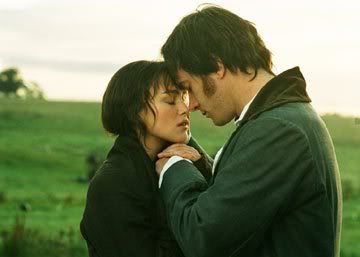
If you've never heard of Erica Eisdorfer, well, lucky for you I'm here to tell you. She wrote a novel called "The Wet Nurse's Tale" which stars the brilliantly complex female protagonist, Susan Rose. The story takes place in 1847 in Victorian England, and maps the fortunate and unfortunate events of Susan's wet nursing career.
Yeah, yeah, you can Google all this info in a snap. What I want to discuss is the fact that I had a chance to speak with and listen to Erica when she came to visit my college. She gave a reading in which she explained that wet nursing is one of the oldest professions in the world and yet hardly talked about, even in today's so-called modern society.
Erica made it clear that this book was not supposed to be a manifesto of any kind; her purpose was to illuminate modern readers on a still touchy subject, and to bring to life the world of the Victorians in ways that no Victorian writer would ever dream of.
I'll talk about two big things about the novel that I think are extremely important for the everyday reader to understand.
First, the MARRIAGE PLOT. This, if you couldn't guess, has to do with women getting married. Basically the rule is that if you're a writer writing a novel with a female main character, you only have two plot choices: 1. The main character gets married and lives happily ever after, or, 2. She dies. (Think Jane Austen, the Brontes, Defoe's Moll Flanders.)


Oh, Mr. Darcy! ...Not too exciting, simply by the fact that we know the ending even before we begin. And the bad thing is, this marriage-plot convention still upholds in the book market today.
Erica defied the MARRIAGE PLOT in her book. I will not give away the ending, but I will tell you that Susan's happily ever after does not rely on her getting betrothed, married, seduced, or dying in some tragic way. When reading this book, take note of how many times your expectations for plot direction are shattered. And revel in the greatness of surprise.
Here's the second big thing: FEMALE BODILY FUNCTIONS. Oh, yes. Not only are women NOT objectified by the typical male-gaze narration, but the functions that today's society deems disgusting are portrayed as beautiful, and, as they should be, natural. If you couldn't guess, breast-feeding is a huge part of the book. What other novels have been written about breast-feeding? Erica stated that when doing her research, she found about four books on the history of wet nursing, one of them out of print and two of them by the same author.
The problem is that when wet nursing was still around as a profession, history books, most novels, and all other literary works were primarily composed by men. And what man would want to write about the REAL function of breasts? Indeed, even today, breasts are only being "normal" when they are used as entertainment, especially in movies and the media. Have you ever seen a movie that shot a scene with breast-feeding, and didn't try to subvert the "rawness" of it?
In short, Erica Eisdorfer's The Wet Nurse's Tale is sublime in the way it both paints realistically the Victorian world and defies the conventions of historical and even contemporary literature. This is a book celebrating the reality of being a woman, of strength and self-sufficiency. Not to mention a good bit of irony and humor that'll keep a smirk on your face.
Visit http://www.thewetnursestale.com/index.php to get more information.
Fun Facts: Before the baby bottle was invented, mothers who could not nurse their infants had to feed them by using spoons or rags; another reason why the infant mortality rate was huge in the Victorian ages. Roughly halfway through the 19th century it was common for wet nurses to stay in the homes of their employers, leaving their own children behind. If you think about it, the implications can be devastating. Especially since wet nurse's had to nurse someone else's baby for up to a year or more.
